Growing your own mushrooms at home can be a transformative experience, and if you're looking to…
Growing Pink Oyster Mushrooms Using Spawn and Grow Kits
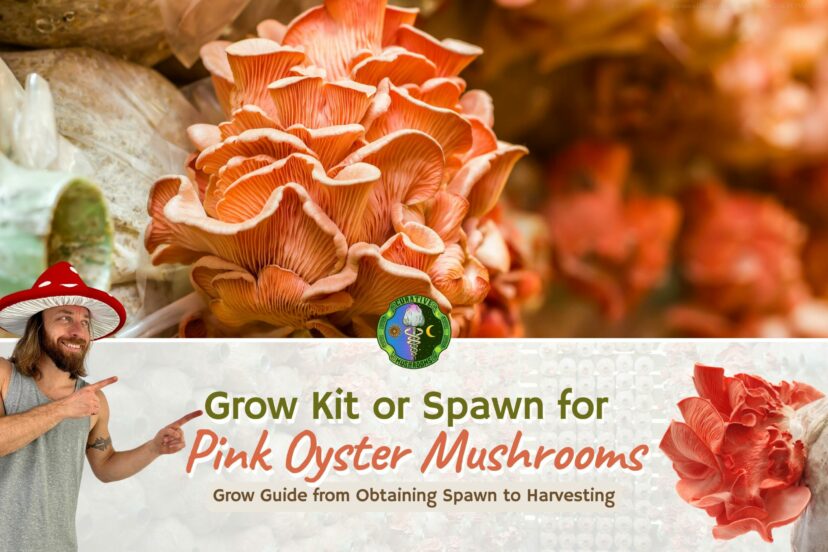
Pink Oyster Mushroom Grow Kit for Indoors Cultivation. Are you interested in growing your own Pink Oyster mushrooms at home?
Growing Pink Oyster Mushrooms Indoors: A Beginner’s Guide to Grow Kits and Alternative Methods
In this blog post, we’ll show you a step-by-step guide on how to cultivate them. We’ll also explain how to obtain mushroom spawn, prepare a substrate, and introduce fruiting conditions.
Get a Pink Oyster Mushroom Grow Kit (spawn + substrate) or Wood-Loving Grow bags (substrate)
How to Grow Pink Oyster Mushrooms?
Oysters can be grown at home with the right tools and techniques. Here are the steps you can follow to grow Pink Oyster mushrooms:
Step 1. Obtain Mushroom Spawn

When it comes to growing Pink Oyster mushrooms, the first step is to obtain mushroom spawn. Mushroom spawn is essentially a vegetative growth of mycelium, the thread-like part of a fungus that absorbs nutrients from the substrate it’s growing on.
There are several methods for obtaining Pink Oyster mushroom spawn, each with its own pros and cons:
A. Culture Syringe
The first method is to use a culture syringe, which involves injecting a small amount of live mycelium culture into a sterile substrate, such as an agar dish or a grow bag. This method is ideal for those who want to propagate a specific strain of Pink Oyster mushrooms, as it allows you to isolate and grow a specific mycelium culture.
B. Spore Syringe
A mushroom spore syringe is not a spawn, but it can be used to create a spawn. You can either get a ready-made spore syringe or create your own if you already have a Pink Oyster mushroom specimen.
This method involves extracting spores from a mature Pink Oyster mushroom and injecting them into a sterile substrate. The spores will then germinate and grow into mycelium. This method is less reliable than using a culture syringe, as there’s a higher chance of contamination.
C. Grain Spawn
The third method is to use grain spawn, which involves sterilizing grains like rye or wheat and inoculating them with live mycelium. The mycelium will then colonize the grains and form a grain spawn. This method is popular among growers because it’s relatively easy to do, and the resulting spawn can be used to inoculate a larger substrate.
D. Ready-to-Use Spawn
The fourth and final method is to purchase pre-made Pink Oyster mushroom spawn, which has already been inoculated onto a substrate like sawdust or straw. This method is convenient and reliable, but it can be more expensive than the other methods.
Once you have successfully grown Pink Oyster mushroom spawn using one of these four methods, you can then mix it with a larger substrate, such as straw or sawdust, to grow your own Pink Oyster mushrooms at home. Refer to the next steps to know more.
Step 2. Prepare a Substrate
To grow Pink Oyster mushrooms, you’ll need to provide them with a suitable substrate. While they can grow on a variety of materials, some common substrates include straw, sawdust, or a mixture of the two.
The substrate needs to be sterilized before use to eliminate any competing microorganisms that could harm the mushrooms.
To sterilize your substrate, you can use a pressure cooker, steam sterilizer, or pasteurization method. It’s essential to follow the instructions carefully to ensure that the substrate is adequately sterilized and ready for inoculation.
Why Pink Oyster Mushroom Grow Kit is the best option for beginners?
If you’re a beginner interested in growing Pink Oyster mushrooms, using an All-In-One Pink Oyster Mushroom Grow Kit is a great option. These kits offer a convenient and hassle-free way to start growing mushrooms at home, without the need for extensive knowledge or resources.
Pink Oyster Mushroom Grow Kits can be found at specialty mushroom suppliers or online retailers. They come with a pre-sterilized, wood-based substrate and inoculated spawn, making it easy to get started.
Plus, these grow bags can also be used to cultivate other functional mushrooms like Lion’s Mane, Reishi, Shiitake, and Turkey Tail. With a Pink Oyster Mushroom Grow Kit, you’ll have everything you need to start growing delicious and nutritious mushrooms in the comfort of your own home.
Step 3. Inoculate the substrate
Inoculating the substrate is a crucial step in growing Pink Oyster mushrooms. Once your substrate is sterilized and cooled, you can mix in the mushroom spawn. It’s essential to ensure that the spawn is distributed evenly throughout the substrate to maximize the chances of successful colonization.
A. When Using a Grow Kit
The process is relatively straightforward. The kit will typically come with pre-inoculated spawn already mixed with the substrate, so all you need to do is follow the instructions in the kit and wait for the mushrooms to grow.
B. For Those Starting from Scratch
There are different methods of inoculating the substrate. One way is to mix in the grain spawn, which will eventually colonize the substrate. Another method involves injecting the culture syringe into the substrate using a sterile technique or transferring it to an agar dish.
C. If You’re Growing from a Grow Bag and Spore Syringes
You can inject the spore syringe’s content onto the grow bag‘s injection port. It’s essential to ensure that the injection site is clean and sterile to avoid contamination.
Overall, inoculating the substrate is a critical step that requires careful attention to detail and proper technique. With the right approach, you can increase your chances of success in growing delicious Pink Oyster mushrooms at home.
Step 4. Incubate the Substrate
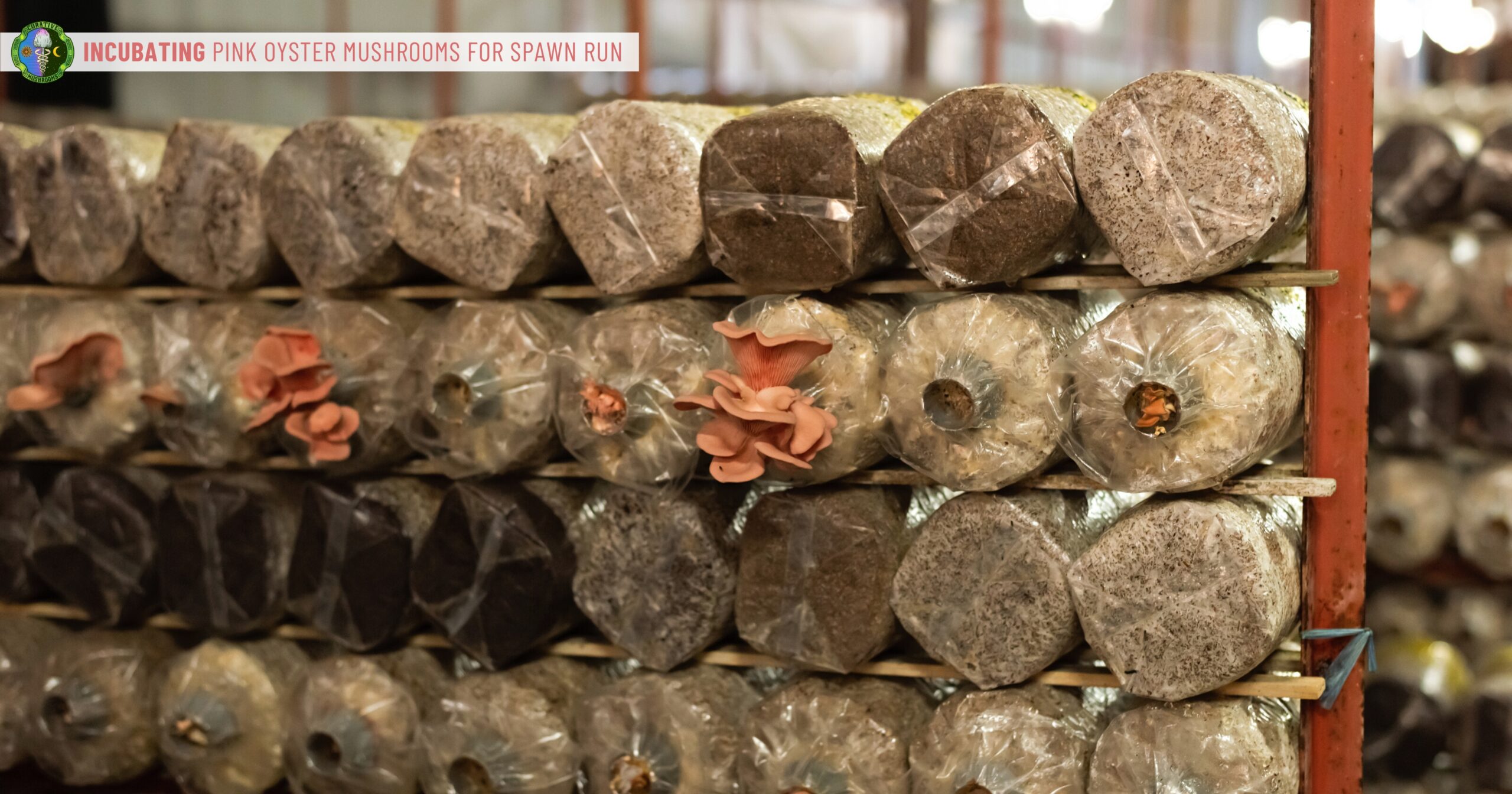
The incubation period, also known as the spawn run, is the stage of mushroom cultivation during which the mycelium fully colonizes the substrate. Following this stage, the pinning stage occurs, during which tiny pins, also known as primordia, form and precede the fruiting phase.
Once the substrate has been inoculated, it’s time to incubate it. The incubation period is when the Pink Oyster mushroom spores germinate or the mushroom mycelium colonizes the substrate.
It’s important to keep the substrate in a place with consistent temperature and high humidity.
This table outlines the recommended environmental conditions for the SPAWN RUN and PINNING STAGES of Pink Oysters cultivation.
| Conditions | SPAWN RUN | PINNING |
| Temp (°C) | 24-30 | 18-25 |
| Relative Humidity % | 85-95 | 85-95 |
| Duration (days) | 7-10 | 2-4 |
| CO2 (ppm) | >5000 | 500-1000 |
| FAE ( per hour) | 0-1 | 5-8 |
| Light lux | 750-1500 |
A. Ideal Temperature for Pink Oyster Mushrooms:
The ideal temperature for Pink Oyster mushrooms to grow is between 24-30°C (75-86°F). Higher temperatures can cause the mycelium to grow too quickly, leading to weaker fruiting bodies. On the other hand, lower temperatures can slow down growth and increase the risk of contamination.
B. Ideal Humidity Conditions for Pink Oyster Mushrooms:
Maintaining a proper humidity level is crucial for the growth and success of Pink Oyster mushrooms. These mushrooms require a high level of humidity to thrive, with the ideal range being around 85-95%.
To achieve the optimal humidity level for your Pink Oyster mushrooms, covering the substrate with a plastic bag or container can be an effective method to trap moisture.
However, if you are using a grow kit, the humidity level may already be sufficient, and you may not need to take any additional measures during the incubation period.
It’s important to note that the incubation period can take anywhere from a few days to several weeks, depending on the temperature and humidity levels. Be patient and monitor the substrate regularly to ensure optimal conditions for Pink Oyster mushrooms to grow.
Step 5. Introduce Fruiting Conditions

After the substrate is completely colonized with mycelium and pins start to form, you can start the fruiting stage. To do this, you’ll need to introduce specific environmental conditions that encourage the growth of the Pink Oyster mushrooms.
This table outlines the recommended environmental conditions for the FRUITING STAGE of Pink Oysters cultivation.
| Conditions | FRUITING |
| Temp (°C) | 20-30 |
| Relative Humidity % | 85-95 |
| Duration (days) | 3-5 |
| CO2 (ppm) | >1000 |
| FAE ( per hour) | 5-8 |
| Light lux | 1000-2000 |
5.1. Fresh Air Exchange
Firstly, make sure the environment has ample fresh air exchange, which helps with carbon dioxide removal and allows for better mushroom growth.
To improve fresh air exchange during the fruiting stage, a common practice among cultivators is to construct a fruiting chamber using a plastic crate or bag that has air holes. Conversely, this helps in maintaining high humidity.
5.2. High Humidity Levels (at least 90%)
Secondly, introduce high humidity levels, which can be achieved by misting the grow bag or adding a humidity tent over the substrate. The ideal humidity level for Pink Oyster mushrooms is around 90%.
In mushroom growing, a humidity tent and a fruiting chamber are similar in that they both provide a controlled environment for the fruiting stage of mushroom cultivation. However, they are not the same thing. A humidity tent is a simple and cost-effective way to maintain high humidity levels during the fruiting stage. It involves covering the fruiting container with a clear plastic bag or sheeting, creating a sealed environment that traps moisture and helps the mushrooms grow. Humidity tents are typically used for small-scale mushroom cultivation. On the other hand, a fruiting chamber is a more advanced setup that allows for greater control over environmental conditions during the fruiting stage. It is typically a larger container or room that is designed to provide the ideal temperature, humidity, and fresh air exchange for mushroom growth. A fruiting chamber may use a humidifier or a ventilation system to regulate the environment, and it may also include shelves or racks for the placement of the fruiting containers. In summary, a humidity tent is a simple and inexpensive way to maintain humidity during the fruiting stage, while a fruiting chamber is a more elaborate setup that provides greater control over environmental conditions.
C. Indirect Sunlight (12–16 hrs/day)
For optimal growth of Pink Oyster mushrooms during the fruiting phase, it is essential to provide them with indirect light for 12-16 hours a day. Placing the mycelium block near a window is an option to get natural daylight.
However, in a place where natural light is not available, growers can use LED grow lights or fluorescent lights to achieve 1000-2000 light lux.
To measure light lux, one can use a light meter or lux meter. These devices are readily available online or at gardening stores and measure the intensity of light in lux units.
By holding the meter close to the mushroom, the meter can provide a reading of the light intensity in lux, allowing growers to adjust the lighting conditions accordingly.
With these optimal growing conditions, you can expect your Pink Oyster mushrooms to begin fruiting within 1-2 weeks.
Step 6. How and When to Harvest Pink Oyster Mushrooms?

Knowing when to harvest pink oyster mushrooms is crucial for optimal yield. As the “pins” or small clusters grow, they will develop into mature mushrooms in a matter of days.
Harvest the fruiting bodies when they have fully grown, but before the caps flatten out, to ensure peak flavor and texture.
When harvesting, twist or cut the mushrooms off the substrate, leaving some stem behind so that the mycelium can continue to grow. Harvesting the mature mushrooms will encourage new growth, and the cycle can continue for several flushes.
Maintaining good hygiene practices is essential to prevent contamination during the harvesting process. Remember to clean and disinfect all tools and surfaces before and after use.
With these simple steps, you can enjoy the delicious and nutritious taste of homegrown Pink Oyster mushrooms in your favorite dishes.
Key Points in Growing Pink Oyster Mushrooms
- The first step to growing Pink Oyster Mushrooms is obtaining mushroom spawn. Four methods of obtaining Pink Oyster mushroom spawn are culture syringe, spore syringe, grain spawn, and ready-to-use spawn.
- To grow Pink Oyster mushrooms, you’ll need to provide them with a suitable substrate, such as straw, sawdust, or a mixture of the two. Sterilizing the substrate is crucial before inoculating it with the mushroom spawn.
- Using an All-In-One Pink Oyster Mushroom Grow Kit is the best option for beginners as they offer a convenient and hassle-free way to start growing mushrooms at home.
- Inoculating the substrate is a crucial step in growing Pink Oyster mushrooms.
- Once the substrate has been inoculated, it’s time to incubate it in a suitable environment.
- After incubation, mushrooms will start to grow, and it’s essential to maintain the right fruiting conditions, such as light, humidity, and temperature, for optimal growth.
- Harvest the Pink Oyster mushrooms when they’re mature and enjoy the delicious and nutritious mushrooms.
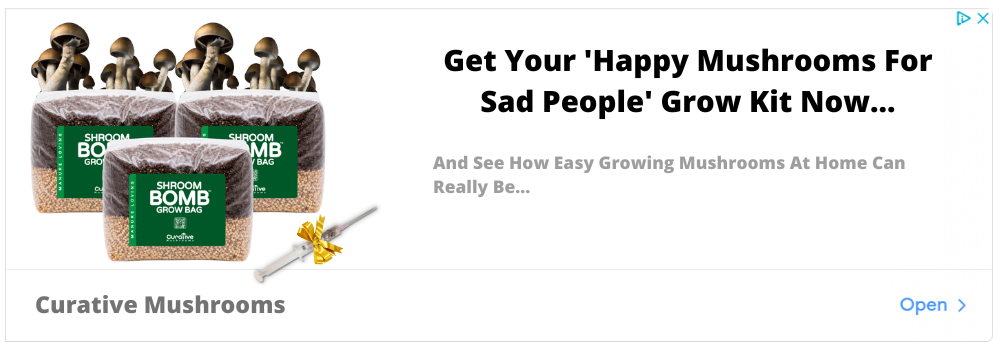
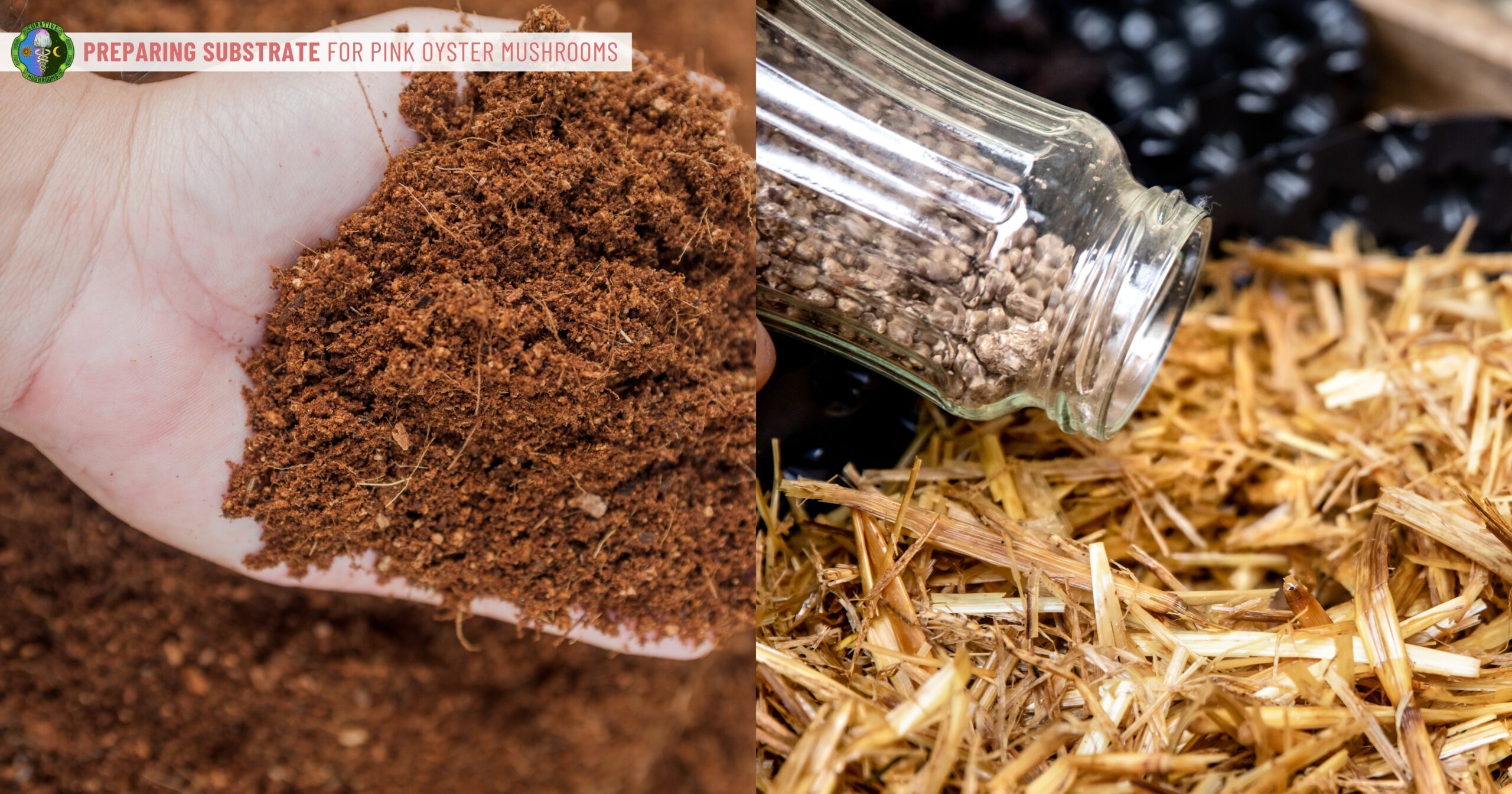
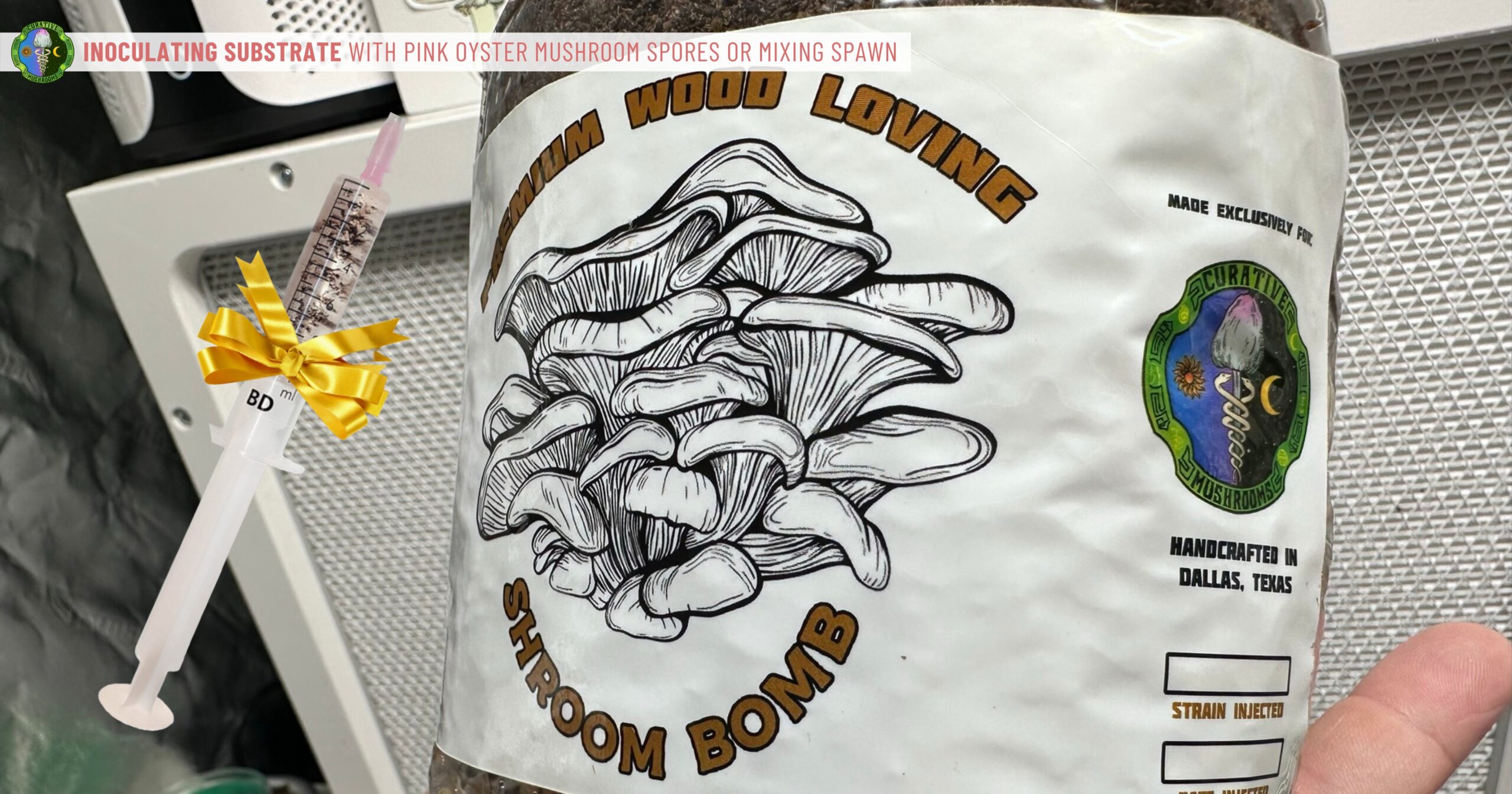
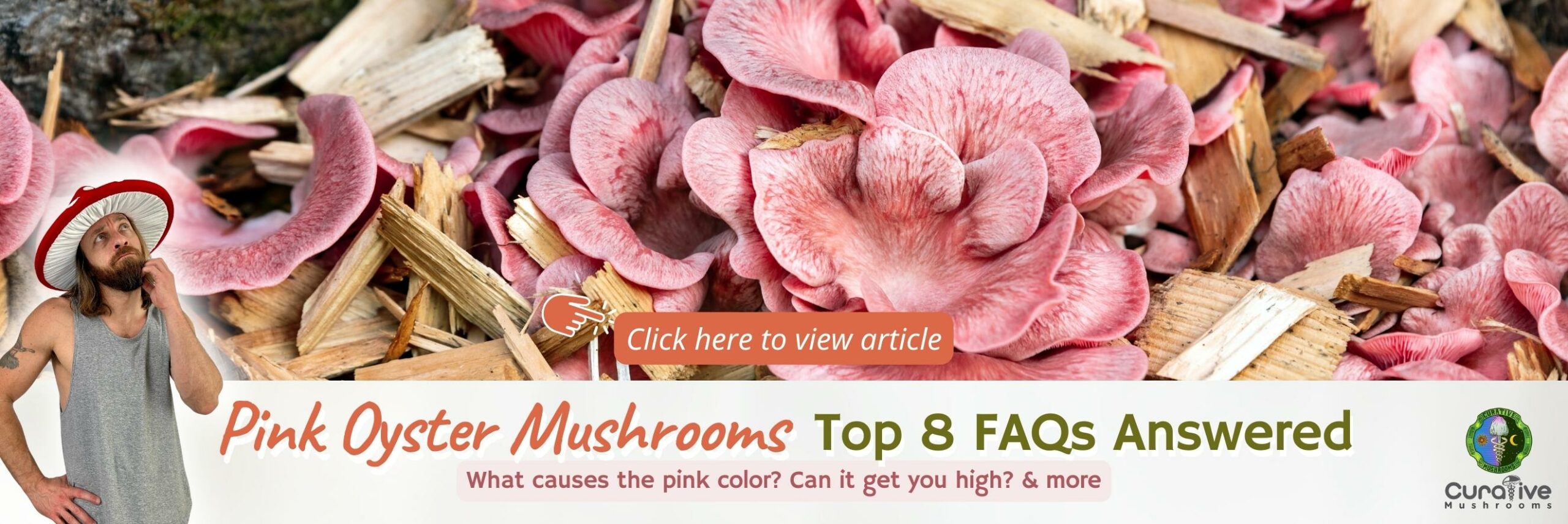

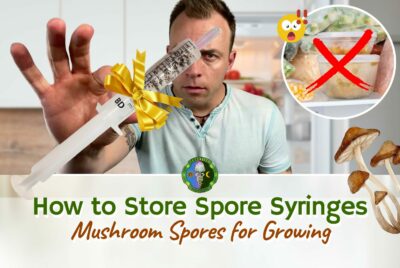

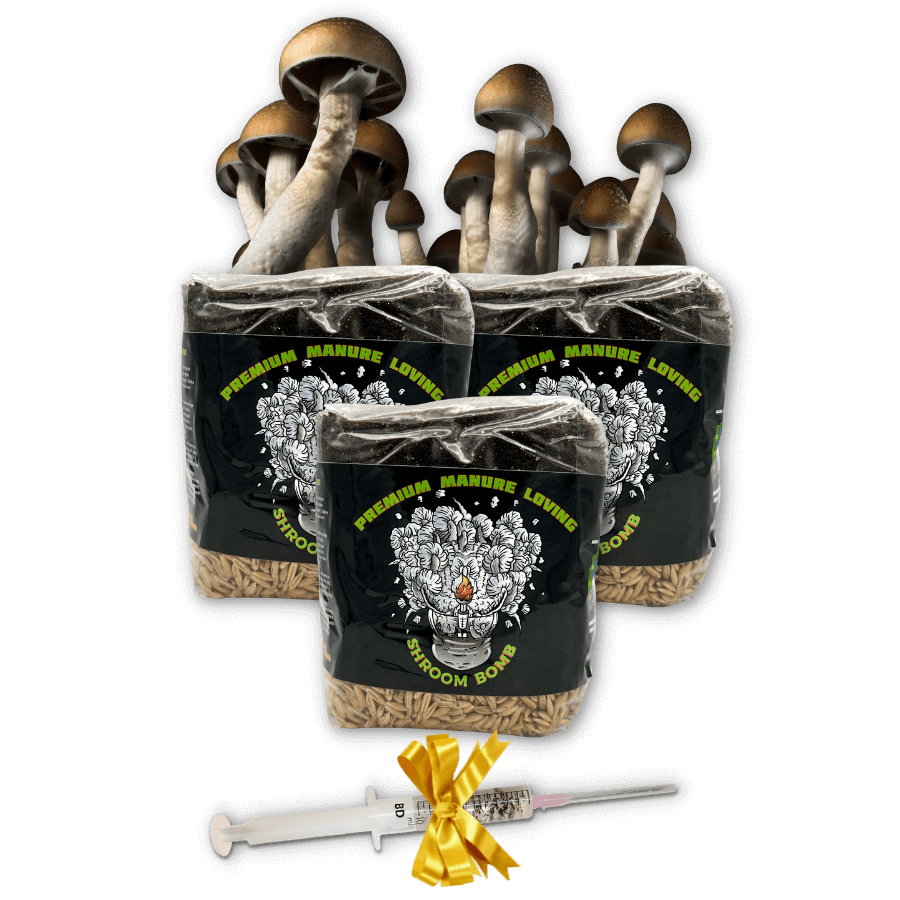

Comments (0)